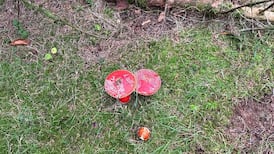Gazing out to the islands across an empty stretch of sea, I have wondered how the west might have fared if Ireland’s colonial history had gone a different way. Would the Shannon estuary be lined with container cranes and gargantuan global barges? Would Killary Harbour, beside me, shelter nuclear submarines?
Instead, we have the Wild Atlantic Way, looking out dramatically to one of the world’s most productive stretches of continental shelf, its reefs and coastal kelp forests rich habitats for ocean life. As almost everywhere in the human-dominated world, it also faces degradation by over-exploitation, pollution, habitat damage and climate change.
'Ireland's network of protected areas cannot be considered coherent, representative, connected or resilient...'
The ocean around Ireland has its “hot spots” of prime ecosystems and biodiversity, many nourished within sight of the coast. They rank as candidates for marine protected areas (MPAs). Yet, “Ireland’s network of protected areas cannot be considered coherent, representative, connected or resilient or to be meeting Ireland’s international commitments and legal obligations.”
That's from a major new appraisal of Ireland's relations with the sea, its publication overlooked among current preoccupations. The 330-page report of the Marine Protected Area Advisory Group has gone to the "heritage" arm of the Department of Housing and Local Government, where Green TD Malcolm Noonan is Minister of State.
The group’s 18 experts, mostly marine and social scientists and legal academics, deal with Ireland’s response to ocean targets in the EU Biodiversity Strategy. The Government is committed to expanding MPAs to 10 per cent of Ireland’s maritime area “as soon as is practical” and to meeting the EU’s higher target of 30 per cent by 2030. Even in Ireland’s 220 million acres of sea, this is a substantial share.
There is no definition of MPA in Irish law, and the Wildlife Acts stop at the foreshore. The group’s report supplies the key definition and recommends more such areas – without specifying where they should go. But it’s also deeply concerned with bringing “stakeholders” on board and with public education on why MPAs are warranted. This contrasts greatly with Ireland’s moves to conserve areas of the landborne natural world in the 20th century. These began as “areas of scientific interest”, and their development at EU Natura sites has been a largely top-down process, with rare local participation.
Different social groups have different views about MPAs, based on their underlying values, livelihoods and social culture
Unlike the frequent local suspicion of SACs, SPAs and NHAs, one might expect most Irish people, especially those on the coast, to be warmly disposed to marine conservation. They are swimming, surfing and sailing as never before and many have watched the brilliant ocean documentaries on television.
But different social groups have different views about MPAs, based on their underlying values, livelihoods and social culture. The group quotes a survey of Irish attitudes to the marine environment that found a far lower public support for MPAs than in six other EU coastal states – 60 per cent of agreement, against 80-plus figures in Portugal and Spain.
The study, of a “representative” 812 people, found them largely unaware of the potential benefits of MPAs. Sceptical of both government and industry in the making of marine plans and policies, they “placed more trust in the competency of scientists”.
That should at least encourage the Marine Institute in Galway, currently courting public interest in a series of "Oceans of Learning"podcasts. Listening to one of these was to hear Simon Coveney TD, one-time minister for the marine and a life-long sailor, quite passionately supporting MPAs as "a point of identity for Ireland".
Five existing offshore MPAs protect deep, cold-water corals off the west as an extension of the Natura network. Among the group’s many proposals, more will be identified and regulated by a new authority and enforced by vessel monitoring and satellite surveillance.
In the report’s painstaking pages, many different kinds of MPA are considered, with declared objectives in protecting species, fish habitats, biodiversity and ecosystems. Some might offer “climate refuge” or even special “dark” and “quiet” zones to escape coastal light pollution and noise.
There’s concern about fostering a “culture of compliance”, notably for MPAs near the shore, and the group looks to “co-management” and “self-governance” to reconcile conservation with fisheries and other community interests.
In his podcast interview (at marine.ie), Coveney confesses his frustration, as agriculture and marine minister, to find ocean affairs filtered chiefly through the interests of the fishing industry. Talk of MPAs and ocean environment would not, as he said, have found much of a hearing even five or 10 tears ago.
The direction of terrestrial nature conservation in Ireland came mostly from outside, its protected areas defined and justified without due effort for public understanding and goodwill. In conserving key corners of the ocean, there is hope of doing things much better and more amicably.









